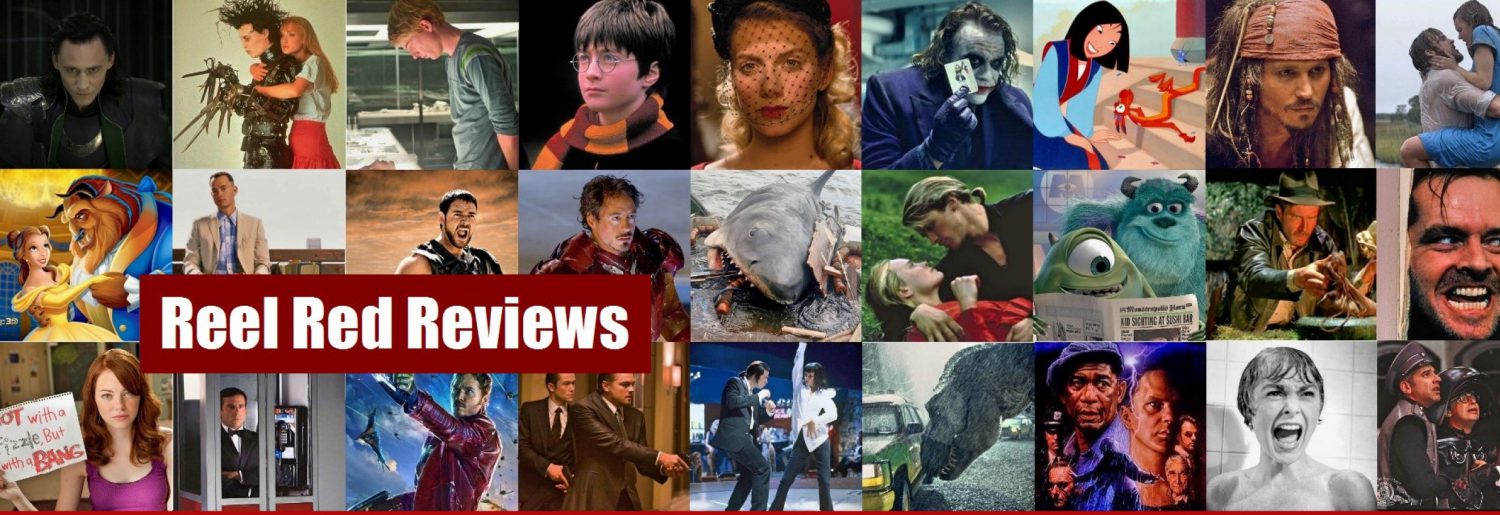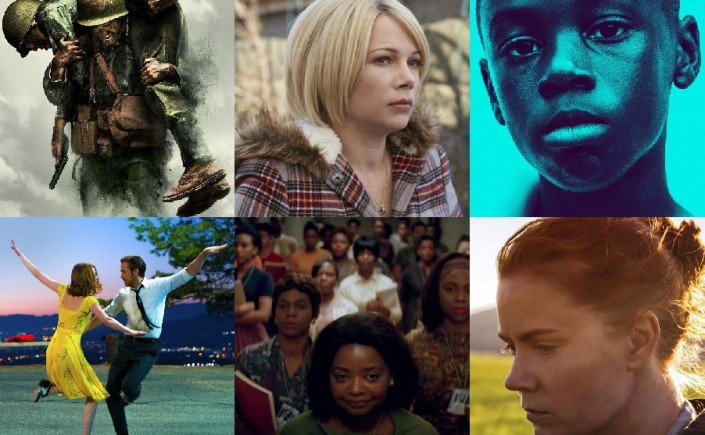You’re probably sick of it. This topic.
I get it; all of us women do. It feels like we’ve been talking about this issue for ages, and this isn’t the 1950s; things are much better for women now. While it’s true that all facets of life for women have improved since that time, they still aren’t as good as they should be. This holds true for the representation of women in film.
The problem is not only the representation of women in film, but also the lack of women in film. Before we can completely focus our attention on how women are portrayed in movies, we need to ask: are women even in movies?
To answer this question, I turn to the Bechdel test, a set of rules that determine whether a work of fiction has a female presence. To pass the Bechdel a film must 1) have at least two named female characters; 2) who talk to each other; 3) about something other than a man. The most recent research reveals that about 58% of all films pass these guidelines, which certainly suggests a positive trend. However, I believe we should be applying the test more specifically to the films that audiences and critics deem “good.” One way of doing this is to apply the Bechdel test to the Academy Award nominations for best picture each year, which I have done for 2016’s nominees. So, let’s find out: What’s the state of women in film for 2016?

Nominee: “Arrival”
“Arrival” comes from Denis Villeneuve, who pleased us all with the film “Sicario” in 2015. What’s unique about “Arrival” is that it’s a science fiction film that centers around a linguist. When 12 alien spacecrafts land in different places all over the globe, a military task force in the US recruits Dr. Louise Banks (Amy Adams) to help them in their struggle to communicate with these aliens. What ensues is an intelligent and emotional journey, with fantastic music, performances, editing, cinematography, and more. Also, the main character is a woman! However, that doesn’t necessarily mean that “Arrival” will pass the Bechdel test…
Obviously, I’ve already pointed out one female character, Louise. However, it seems that Louise is the only woman allowed on this special military task force, excluding an unnamed nurse. The only other named female character in the film is Hannah, Louise’s daughter (✔). I don’t want to give to away too many details about how this daughter plays into the film, but she does talk to her mother (✔) without mentioning any men (✔).
Verdict: Thumbs up
Nominee: “Fences”
“Fences” is surely one of the greatest screen adaptations of a play in existence. Of course, this may be because the original playwright, August Wilson, wrote a draft of the screenplay before his death in 2005. But we can also credit Denzel Washington’s excellent direction. The film is set in the 1950s, and follows Troy (Washington), a middle-aged black man who struggles to provide for his family. Don’t be deceived by the simple premise; “Fences” truly paints a complex picture of the African-American experience.
Viola Davis plays Troy’s wife Rose, and makes her one of the most memorable female characters of the year. The only other named female character is the daughter of Troy and his mistress, Raynell (Saniyya Sidney), who gets very little screentime (✔). Despite this, we do see Rose and Raynell talk to each other (✔) about the crucial matter of Raynell’s shoes (✔).
Verdict: Thumbs Up
Nominee: “Hacksaw Ridge”
Now that Hollywood has forgiven Mel Gibson for his past transgressions, he’s back to making good movies. “Hacksaw Ridge” tells the story of Desmond Doss (Andrew Garfield), a young Christian man who supported the US on the Japanese front during World War II as a combat medic. Determined to stick to his pacifist beliefs, Desmond refused to touch a firearm, yet saved over 75 soldiers during battle.
“Hacksaw Ridge” is another film that has exactly two female characters, Desmond’s loving wife (Teresa Palmer) and his mother (Rachel Griffiths) (✔). Unfortunately, these two never do get the chance to converse on-screen (❌).
Verdict: Thumbs Down
Nominee: “Hell or High Water”
The Oscar nomination for “Hell or High Water” came as a big surprise to many film fans, but a happy surprise nonetheless. Director David Mackenzie and writer Taylor Sheridan team up for an exciting Western crime thriller that follows two brothers, Toby and Tanner Howard, robbing banks across Texas. It’s been noted for the phenomenal leading performances by Jeff Bridges and Chris Pine, as well as excellent pacing and a meaningful screenplay.
When I think back on the film, I remember one woman, a waitress who serves the brothers at a diner in one scene. Unfortunately, this woman’s listed name is “Waitress.” Still, a check to the movie’s Wikipedia page reveals that there are a few named female characters, including Toby’s ex-wife Debbie (Marine Ireland) (✔). Yet it’s unclear how the so-named Jenny Ann (Katy Mixon) and Elsie (Dale Dickey) fit into the story. Just to be sure, I’ve consulted the Bechdel Test Movie List, which confirms that the other two criteria go unfilled (❌).
Verdict: Thumbs Down
Nominee: “Hidden Figures”
Unless you’ve been living under a rock, there’s no way you haven’t heard of “Hidden Figures.” What everyone has been saying is true: the story of these three amazing African-American NASA scientists is “hidden no more.” While the film primarily follows Katherine Johnson, who calculated the trajectories for the “Apollo 11” and “Apollo 13” missions, the movie shows the stories of two other NASA computers, Dorothy Vaughan and Mary Jackson.
“Hidden Figures” is a shooting star for marginalized people in so many ways. Katherine (Taraji P. Henson), Dorothy (Octavia Spencer), and Mary (Janelle Monae) are all African-American women who work at NASA (✔) – and not doing clerical work, mind you – during the heart of the civil rights movement. These three ladies are strong and ambitious, something we gather from numerous conversations they carry with one another (✔). They talk about a variety of issues, including the injustices they face on a daily basis and the many professional and personal goals they’ve set for themselves. (✔).
Verdict: Thumbs Up
Nominee: “La La Land”
The third feature film from acclaimed “Whiplash” director Damien Chazelle, “La La Land” follows an aspiring actress and a struggling jazz musician as they fall in love and inspire each other to chase their dreams. Objectively, it’s accurate to say that this musical was the Oscar frontrunner going into this year’s awards season. As for my own opinion, “La La Land” was my favorite film of 2016 – but does it hold up against the Bechdel test?
“La La Land” almost spoils us with five named female characters (✔). Mia (Emma Stone) is our protagonist, and she lives with Tracy (Callie Hernandez), Alexis (Jessica Rothe), and Caitlin (Sonoya Mizuno). Laura (Rosemarie DeWitt) rounds out the female cast as the jazz musician’s sister, who’s in a happy relationship. Mia and her three roommates have at least two scenes together in which they talk to each other (✔). The first time this occurs is during one of the movie’s opening scenes, when Mia’s roommates persuade her to attend a party (✔).
Verdict: Thumbs up
Nominee: “Lion”
“Lion” tells the true story of Saroo Brierley, a boy who is separated from his family and is taken in by Australian foster parents. Years after the incident, Saroo remembers his brother, sister, and mother, and becomes determined to find them. Despite the fact that this film feels a bit like an advertisement for Google Earth, it does carry a moving storyline and some stellar performances from Dev Patel and Sunny Pawar.
The film actually does have several named female characters, with the most central ones being Sue Brierley (Nicole Kidman), Saroo’s adoptive mother, and his girlfriend Lucy, played by Rooney Mara (✔). Another notable female character is Mrs. Sood (Deepti Naval), the woman who enables Saroo’s adoption. Sue talks to Mrs. Sood and Lucy in separate scenes (✔), but the conversation is always about Saroo (❌).
Verdict: Thumbs Down
Nominee: “Manchester by the Sea”
A beautiful but terribly tragic film written and directed by Kenneth Lonergan, “Manchester by the Sea” has been recognized for its screenplay as well as standout performances from Casey Affleck, Michelle Williams, and Lucas Hedges. The film examines how we handle grief through the case study of Lee Chandler (Affleck), a man who faces the loss of his brother while still trying to handle the ghost of his past tragedies. On top of his own grief, Lee is burdened with the sorrow of his brother’s son Patrick (Hedges), as well as the task of being the boy’s guardian.
“Manchester by the Sea” has plenty of named female characters, with the most prevalent ones being Lee’s former wife Randi (Michelle Williams) and his brother’s former wife (Gretchen Mol) (✔). These two never interact. Enter Sandy (Anna Baryshnikov), one of Patrick’s girlfriends. Sandy talks to her mother, Jill (Heather Burns) in one instance (✔), but the discussion focuses on Lee (❌).
Verdict: Thumbs Down
Best Picture Winner: “Moonlight”
Barry Jenkins’s second feature film has blown us all out of the water, and rightfully scored the 2016 Academy Award for best picture. “Moonlight” follows a Chiron, a young black boy growing up in Miami, through three stages of his life as he struggles with his identity. The story is told with gorgeous cinematography and music, and a fantastic cast.
The female players in “Moonlight” are Chiron’s mother Paula (Naomie Harris) and Teresa (Janelle Monae), who serves as a secondary mother figure in Chiron’s life (✔). Although these two characters are written and acted well, they never converse with one another (❌).
Verdict: Thumbs Down
As you can see, the Bechdel test reveals that only four out of the nine best picture nominees for 2016 have a female presence. It’s disappointing to realize that less than half of the films deemed worthy of competing to be the best film of the year tell women’s stories. Even more disappointing is the fact that “Moonlight,” the best picture winner, doesn’t pass the test.
It should be noted that failing to pass the Bechdel test does not diminish the quality of a film, rather it points out an overarching problem in the industry. For example, although “Moonlight” fails the test, it’s still an amazing film (also, it seems absurd to criticize a film that so powerfully gives a voice to the impoverished, African-Americans, and the LGBT community).
The problem in the industry is simple. Only 19 percent of pivotal roles in movie-making – think directors, writers, and producers – are filled by women; therefore women’s stories aren’t being told. We’ve seen the story of the straight, white, American male told countless times in countless critically acclaimed movies. In 2017, we need to be telling the stories of the LGBT community, of minorities, of the elderly, and of women.


The most frustrating part is that if you go beyond that super basic criteria of ‘are there women even in this film that talk to each other about something besides a man’ the only one that really measures up to ‘are women depicted as unique individuals rather than set-pieces’ is Hidden Figures. That’s really the only film where more than one woman is actually developed as a character.
Again, not to say I don’t LOVE some of the ones that fail the Bechdel test, and I do think that some of them are that way because they don’t NEED any extra characters, the point isn’t that these films fail, it’s that there aren’t OTHER films that have women’s stories instead of men’s.
I really appreciate this post, because it’s something people need to see.
LikeLiked by 1 person